Is DC Comics Spearheading a New Age in Super Hero Comics?
By Hervé St.Louis
October 9, 2005 - 23:12
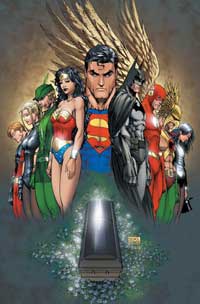 |
| indentity Crisis #1 |
The Plan
DC’s renewal started last year with 2004's Identity Crisis written by Brad Meltzer and illustrated by Rags Morales, and Michael Bair. The format was highly unusual for a revival. It was a seven-issue mini-series with but a few crossovers in other titles. However, as older revivals and major comic book company, Identity Crisis was used as the launchpad of several new series, such as the new Firestorm and the Manhunter.
Unlike other crossovers, several dangling plots were left unresolved at the end of the story and that’s where DC Comics’ revival started in early 2005. The publisher released several mini-series leading up to Infinity Crisis, another mini-series where other dangling plot threads from the previous series would be solved. Although there were five main series, Countdown to Infinite Crisis, Villains United, Day of Vengeance, The OMAC Project, and The Rann-Thanagar War, there are other series, tied to the current revival.
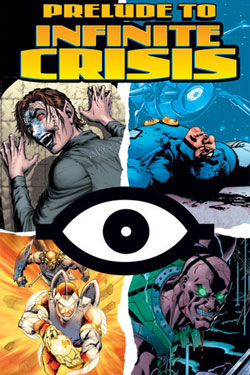 |
| Prelude To Infinity Crisis |
On another front, writer-artist Phil Jimenez is reintroducing Donna Troy to the DC Universe as the heroine that ties all of the current events within the new Infinity Crisis. Unlike the other DC series that were truly born from dangling plot threads from Meltzer’s Identity Crisis, The Return of Donna Troy reuses the continuity from the classic Crisis on Infinite Earths, the original maxi-series that inspired Infinity Crisis.
History and Competition
Infinity Crisis is really an attempt to recapture the energy and innovation that were produced in the Crisis on Infinite Earths series that span twelve issues in 1984-85. The effects of this series were a total creative reboot of the DC Universe with new talents joining, characters being reinvented and lots of experimentation. This aspect of the 2005-2006 Crisis event from DC Comics seems to be hinted desired by the publisher.
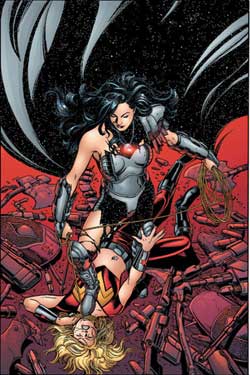 |
| Return Of Donna Troy #2 |
Knowing that DC Comics was about to reboot its super hero comics, Marvel tried to match 2004's Identity Crisis with two series. First, there was Identity Disc, about villains trying to get a disk containing information on all Marvel super heroes. Then the Avenger’s Disbanded storyline replaced the Avengers with Marvel’s most popular characters.
Although both of the major series introduced by DC Comics and Marvel Comics in 2004 had their ups and down, Identity Crisis was the better event and series in the super hero market of that year. DC Comics built its’ revival on the same event. Marvel tried too, with the 2005 House of M event, tied with the events of the Avengers Disbanded story. However, Marvel’s promotion is weaker and the story not as smooth as DC Comics’ Infinite Crisis.
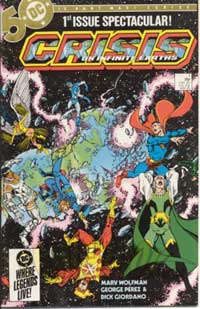 |
| Crisis On the Infinite Earths #1 |
Ascension
In the past, the work on one publisher always propelled generational revivals in the American super hero market. For example, the early Silver Age, around 1955-1960, with the revival of the super hero genre was brought by DC Comics. However, Marvel Comics, generated the sophistication of storytelling and characterization occurring in the middle Silver Age. At the time, DC Comics’ revival effect had already worn off.
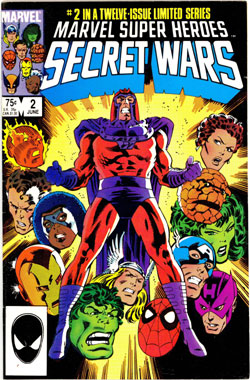 |
| Secret Wars #2 |
During that time, DC Comics followed Marvel Comics’s lead and improved its offering too, but without ever setting the agenda. Amazingly, just when Marvel’s aesthetic and storytelling revival calms down, DC Comics escaped from its competitor’s shadow. Although Marvel Comics looks like is losing the competition, if history repeats itself, it should lead the next revival in about five years. Yet will Marvel be patient enough to wait that long?
Related Articles:
DC Comics Drops Diamond as its Distributors
DC Comics On-Sale 06/03/2020
DC Comics On-Sale 05/27/2020
DC Comics On-Sale 05/20/2020
DC Comics On-Sale 05/12/2020
DC Comics On-Sale 05/5/2020
DC Comics On-Sale 04/28/2020
DC Comics On-Sale 03/25/2020
DC Comics On-Sale 03/18/2020
DC Comics On-Sale 03/11/2020
